The following is a detailed list of changes in the 5th edition of this guide. More changes can be found in the review of the 5th edition.
5th Edition
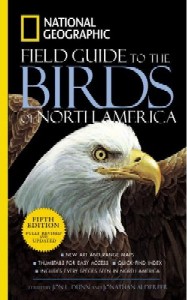
4th Edition
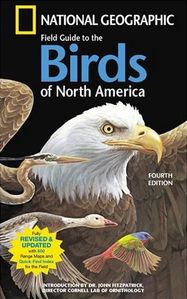
For polytypic species where all or most of the illustrations are of one subspecies (ssp), the ssp name is added under the common name on the plate. The fourth edition did this for some species, but the new edition does it for many more. This is actually a very nice feature as it will keep you from having to consult other sources if you need this information.
Introduction – there have been some slight changes, such as a more extensive section on species selection.
Changes in illustrations:
- Cackling Goose – new species. Added illustration of “Taverner’s” ssp
- Canada Goose – added illustration of “Lesser” ssp
- Spot-billed Duck – replaced with a swimming instead of standing bird. The color of the speculum changed from purple to blue.
- White-winged Scoter – added illustration of an adult male stejnegeri ssp
- Barrow’s and Common Goldeneye – on both species the size of the adult male’s white facial marking has been reduced. There is also an added illustration of an adult male Barrow’s x Common hybrid
- Common Merganser – added depiction of an adult male “Goosander” ssp
- Blue Grouse split into Sooty and Dusky Grouse. No change to illustrations
- The page of small grebes has been completely reworked. No illustrations have remained the same.
- Least Grebe – addition of a juvenile bird. All trace of brown and rufous has been removed from the adults and they are now more gray
- Pied-billed Grebe – addition of a juvenile bird.
- Horned Grebe – “darker winter” and “adult in spring molt” birds have been added
- Eared Grebe – “paler winter”, first fall, and downy young illustrations have been added.
- There is also a new side-by-side illustration of winter Horned and Eared from the rear, showing a subtle difference in shape and coloration.
- Parkinson’s and Great-winged Petrel – new species
- Mottled, Cook’s, and Stejneger’s Petrels – completely new illustrations
- Cory’s Shearwater – new above and below illustration of the borealis ssp (the only one shown in the 4th), and the addition of the diomedea ssp (which I believe is recognized as a full species in Europe)
- Cape Verde Shearwater – new species
- European Storm-Petrel – new species
- Northern Harrier – completely changed. Previously there was only a perched juvenile and one in-flight picture of a male and female. There is now a much better looking perched juvenile, along with a perched male. And there are above and below view of in-flight males and juveniles, along with a below view of a female.
- Harris’s Hawk – the perched bird has been replaced with a new one
- Roadside Hawk – new species
- Prairie Falcon and Gyrfalcon – the in-flight images have been replaced with new ones
- Peregrine Falcon – added image of an in-flight adult anatum ssp
- Purple Swamphen – new species
- Willet – in the 4th, only the breeding, winter, and juvenile of the western ssp was shown. Those illustrations have been replaced by new ones, and have been joined by a breeding and juvenile eastern Willet. There is also a comparison of the two “early March in molt”.
- For many of the shorebirds an in-flight illustration has been added. The images are not new, but have been copied from the separate plates of shorebirds in flight.
- Marsh Sandpiper – new species
- Eskimo Curlew – someone messed up the image and chopped about half the bill off. The bird shown in-flight is correct.
- Sanderling – all three images have been replaced
- Dunlin – the breeding, winter, and juvenile images have been replaced, and there are new illustrations of breeding sakhalina, pacifica, and schinzii ssp
- Curlew Sandpiper – the breeding and juvenile birds have been replaced, and a winter one added
- Dowitchers – the winter birds, both standing and in-flight, have been recolored slightly. They are now more brownish, and less gray
- Kelp Gull – new illustration of a Kelp x Herring hybrid winter adult
- Lesser Black-backed Gull – new winter adult intermedius ssp
- Ross’s Gull – a first winter bird was added to the Immature Gulls in Flight plate
- Broad-tailed Hummingbird – the male’s facial pattern was changed slightly
- Great Spotted Woodpecker – new species
- Pewees – the entire plate has been redone and looks much, much better
- Tufted Flycatcher – new species
- Fork-tailed Flycatcher – juvenile added
- Gray and Thick-billed Kingbirds – illustrations replaced
- Sky and Horned Larks – completely redone and many new images added
- Wrentit, Titmice, and Chickadees – these have been completely redone with new images. The older plates really bugged me – they just looked bad. These are much improved.
- Eyebrowed Thrush – both images replaced
- Dusky Thrush – the old illustration has been discarded and replaced with new images of a male, female, and male naumanni ssp
- White and Black-backed Wagtails – lumped together. Breeding male alba ssp added
- American Pipit – images replaced and the breeding alticola ssp added
- Red-throated Pipit – all images replaced
- The details of the tail and upper tail-coverts of the American and Sprague’s Pipits have been removed.
- Black-and-white Warbler – all three illustrations replaced and look much better. The male in the 4th edition looked very awkward.
- Bachman’s, Botteri’s, and Cassin’s Sparrows – all their images have been replaced, and a new illustration of the texana ssp of the Botteri’s has been added
- Sage Sparrow – added the canescnes ssp
- Vesper Sparrow – in the 4th there was just one illustration, of the western (confinus) ssp. In the 5th, this has been replaced with a new one. Also, an illustration of the eastern (gramineus) ssp has been added as well as a bird in flight (excellent, since they are often seen flushed up and their white outer tail feathers are distinctive)
- Dark-eyed Junco – the existing “Pink-sided” illustration has been replaced, and a new image of a bird from the front has been added
I’m sure there are more changes that I did not find. The only illustration that was in the 4th edition and is not contained in the 5th is the tail images of the pipits. Another curious change is that in the new edition the index no longer includes check boxes next to the species’ common name.
Full review of the 5th edition.
Posted by Grant McCreary on February 1st, 2007.





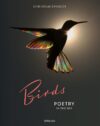
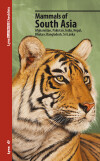
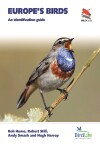
Your review was well done. I wrote one in Amazon Books where I found fault with the map coverages, rarity and migration indicators. The guide is a poor choice for MN birders as 36% of the MOU checklist birds don’t show up on the MN maps.